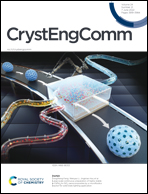Cubic core–shell structure of NiCoSx/CoS2 as a high-efficiency tri-functional catalyst for Zn–air battery and overall water splitting†
Abstract
Cubic core–shell NiCoSx/CoS2 composite catalyst was successfully prepared on the basis of K3[Co(CN)6]. First, Ni2+ is substituted for K+ in K3[Co(CN)6]2 to prepare the binary metal ion precursor of Ni3[Co(CN)6]2. Afterward, coating Co(OH)2 on the surface of Ni3[Co(CN)6]2 could not only maintain the cubic structure of Prussian blue analogue but also build a composite interface between two phases. After the Ni3[Co(CN)6]2/Co(OH)2 precursor is sulfided, a porous NiCoSx/CoS2 composite catalyst material with a cubic structure is obtained. NiCoSx/CoS2 catalysts showed excellent oxygen evolution reactions and oxygen reduction reactions. The overpotential was only 310 mV to achieve a current density of 20 mA cm−2 and the half-wave potential can reach 0.80 V. During the exploration of the hydrogen evolution reaction, the catalyst exhibited 253 mV overpotential at 10 mA cm−2. When this catalyst was used in Zn–air batteries as the cathode, it showed excellent cycle stability (210 h) and small voltage gap (0.80 V) at 5 mA cm−2. Meanwhile, soft-pack flexible batteries assembled with NiCoSx/CoS2 can be charged and discharged stably at any bending angle.



 Please wait while we load your content...
Please wait while we load your content...